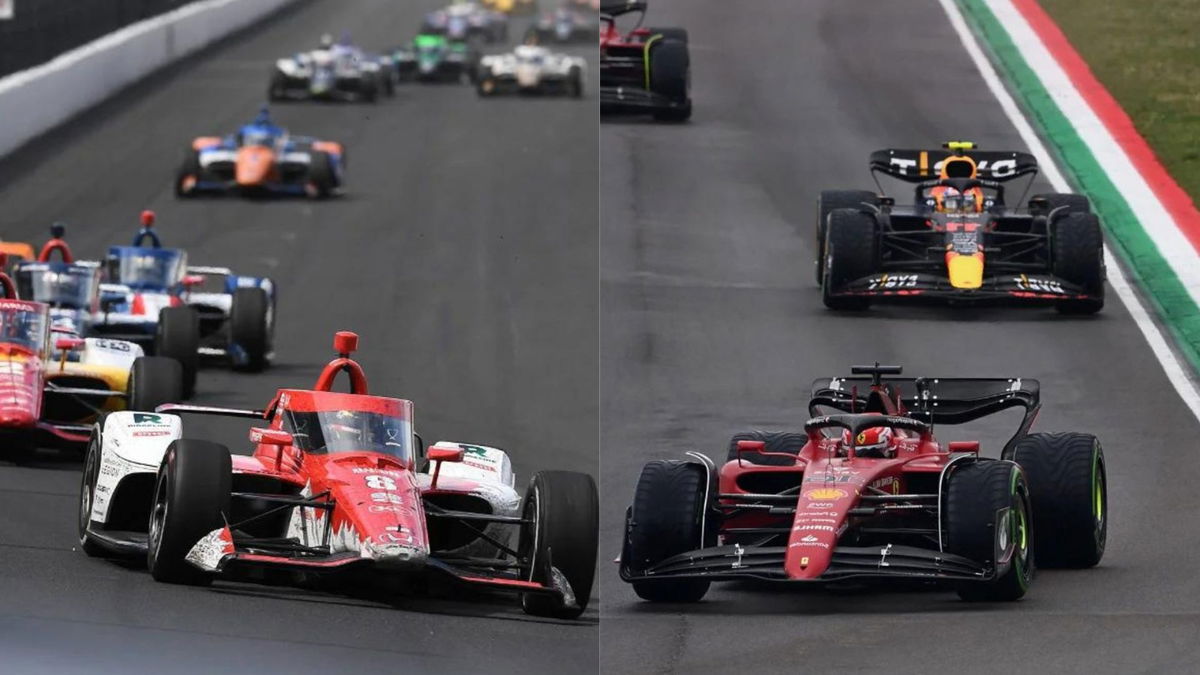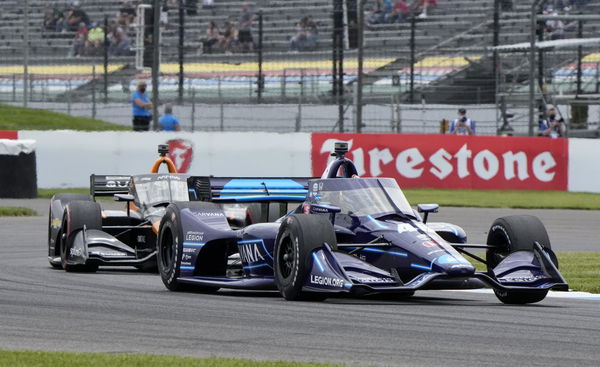
Imago
Image Courtesy: Imago

Imago
Image Courtesy: Imago
The debate of F1 vs IndyCar has been going on for ages. Fans are always interested in knowing which of the two series is faster. F1, the pinnacle of motorsports or IndyCar, the fastest American Open Wheel racing series. However, that does pose or lead to a more important question of which of the two series is safer. Let’s have a look at the latest configurations of F1 and IndyCar to decide which of the two is safer.
Watch What’s Trending Now!
Motorsports is known to be a cruel sport that has taken the lives of many during the course of history. Yet, people still take that risk, to fulfill their adrenaline rush and become the champion of the world. A safety comparison between F1 and IndyCar isn’t as straightforward as it might seem. While the two cars look similar, they’re worlds apart in how they perform and save the drivers from getting into an incident or saving them in case of an incident.
ADVERTISEMENT
Key safety differences between F1 and IndyCar
Let’s talk about the latest introductions to these open-wheel racing series that were solely introduced for the protection of the driver: The Halo and the Aeroscreen. Halo was introduced on the F1 cars in 2018 and is a titanium bar mounted in three places above and on top of the driver cockpit. IndyCar on the other hand uses Aero Screen, a similar concept to Halo but with a polycarbonate shield around the structure. While both play the role of saving the driver’s head from impact, Aero Screen has the advantage of saving the driver from any flying debris.

USA Today via Reuters
May 15, 2021; Speedway, Indiana, USA; Indy Series driver Jimmy Johnson (48) during the GMR Grand Prix at Indianapolis Motor Speedway Road Course. Mandatory Credit: Mike Dinovo-USA TODAY Sports
Talking about the general danger involved in both the series, IndyCars reach a higher top speed compared to F1 in their lowest drag configuration. F1 cars on the other hand aren’t as fast in the straight line as downforce is the name of the game. And with IndyCars racing on ovals like the Indianapolis, the likelihood of a high-speed crash is much higher than F1. Kyle Kirkwood’s crash at this year’s Indy 500 is a perfect example of what a high-speed IndyCar crash looks like.
ADVERTISEMENT
The Monocoque of both F1 and IndyCars are made out of carbon fiber. F1 however runs a hybrid powertrain whereas IndyCar has a 2.2 L Twin Turbo V6. The extra electronic components in an F1 car raise some safety concerns in terms of a crash.
Read More: With Rain Predicted to Hit Already-Freezing Las Vegas GP, Will Ensued Chaos Drown F1?
ADVERTISEMENT
Nonetheless, one thing F1 is safe from the fire in the pits during refueling. F1 cars have a larger fuel tank and don’t require any refueling whereas IndyCar on the other hand does refueling. This leaves us in a conundrum of having to decide which of the two racing series is safer.
Which open-wheel racing series is safer?
Before we decide which racing series is actually safer, let’s have a look at some recent stats. Over the last 2 decades, there have been 4 fatalities in IndyCar compared to only 1 in F1. According to flowracer.com, the fatality rate in Indycar is 7% compared to 3% in F1. Hence these stats suggest that over the last two decades, and in general F1 is safer compared to IndyCar.
ADVERTISEMENT

Reuters
Formula One F1 – United States Grand Prix – Circuit of the Americas, Austin, Texas, U.S. – October 22, 2023 Mercedes’ Lewis Hamilton in action during the race REUTERS/Brian Snyder
In the modern era, the safety of the driver is of the utmost importance. With the introduction of Halo and Aero Screen along with other safety measures taken in recent times, it is difficult to predict which open-wheel series is safer at this moment in time.
WATCH THIS STORY | How Fast Can F1 Cars Go? Comparisons With MotoGP, IndyCAR, NASCAR and Formula E
ADVERTISEMENT
While F1 is gaining a huge share of audiences in the US, the abundance of competitive racing in IndyCar cannot be ignored as well. Thus, even IndyCar is looking to retain its place as a fan-favorite racing series besides F1 in America.
ADVERTISEMENT
ADVERTISEMENT
ADVERTISEMENT

